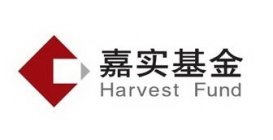China's ETF market is being driven by similar dynamics to those in the west, Felix Xu writes.
The increasing institutional participation and the availability of Fund of Funds (FOFs) have buoyed Mainland onshore ETF market this year at which its ETF issuances for the whole year are expected to reach an all-time high.
Market experts anticipate that Mainland ETF industry is on the cusp of a structural change that investors will have stronger desires to use thematic ETFs to meet their asset allocation demand.
According to the figures from the Shanghai Stock Exchange (SSE), the bourse's total ETF turnover amounted to around 658 billion RMB (US$99.25 billion) for the first nine months this year, against the sum of 651 billion RMB for 2016.
Meanwhile, the number of ETF listings in China over the period was almost equivalent to the whole-year total of 2016 at 20.
This marks a significant increase compared to the 12-year average that only 12 ETFs went public in the market every year between 2005 and 2016.
According to Robert Chen, head of asset allocation and passive investments at Harvest Global Investments (HGI), the Mainland ETF market has been "booming" this year in the sense of the substantial increase in new issuances and trading volume.
Mr. Chen expects the amount of new listing will reach a fresh high this year with several products in the pipelines.
HGI is the Hong Kong-based subsidiary of Mainland asset management giant Harvest Fund Management.
The ETF market trajectory appears to have been driven by two factors - the emergence of fund of funds (FOFs) and the increase in institutional participation.
In September, the China Securities Regulatory Commission gave the approval to a roaster of Mainland asset managers to launch the country's first FOFs products.
"The launch of FOFs has sped up the development of ETF market. FOFs managers are looking to incorporate the ETFs with specific functionalities in their portfolios for tactical allocation," says a senior analyst of Shanghai Securities Co.
"In the past, vast majority of Mainland ETFs were equity-tracking. But now ETF providers are realising that they have to diversify their ETF line-up to track other areas such as fixed income and commodities funds so as to capitalise on the FOF market growth," says Mr. Chen.
The analyst states that Mainland market has entered into an "asset allocation era". Mainland ETF sponsors are looking to launch thematic and sector ETFs, she adds.
In fact, these types of ETFs such as the ones tracking ChiNext-related indexes, the NASDAQ-style board of the Shenzhen Stock Exchange, have secured significant growth in trading volumes this year.
Additionally, institutional investors have become more active to utilise China-listed ETFs for different asset allocation purposes such as arbitrages and risk management.
"The investors prioritise broad-based or money market index trackers such as the ChinaAMC China 50 ETF," the analyst points out.
According to Mr. Chen, Mainland institutional investors are "very open" to use ETF products, but the market has limited choices that can meet their portfolio allocation requirement.
For example, Mainland investors have strong appetite to increase their overseas exposure, but there are only seven cross-border ETFs listed on the SSE, which is far from matching the huge market demand, he adds.
Currently, there are 168 ETFs listed on the SSE and the Shenzhen Stock Exchange including 30 money market-linked ETFs.
"From the cost-to-income ratio perspective, asset managers find the ratio for ETFs is less attractive than active products'. As such, ETF issuances are still concentrated in a number of sizable and resource-rich fund houses," the analyst says.
Also, with the ongoing downside trend of management fees, the market landscape is expected to further consolidate going forward, she adds.
Mr. Chen observes that newcomers might find it more difficult to break into Mainland ETF market.
"A big chunk of m the market has been dominated by the big names. Newcomers have to be well-equipped in investor education and product innovation, and differentiate their offerings from their rivals'," he adds.



